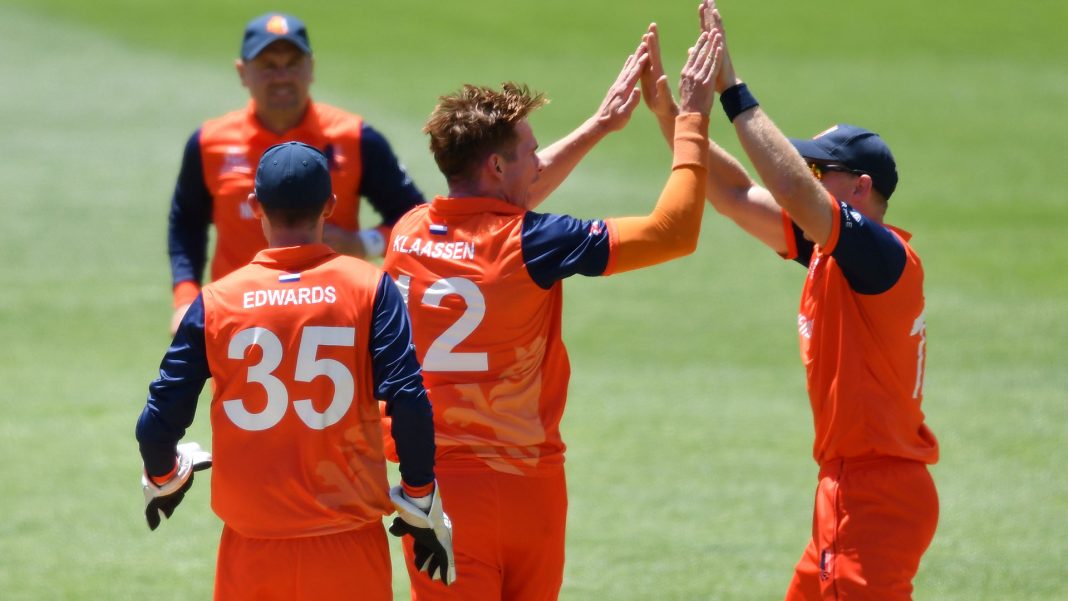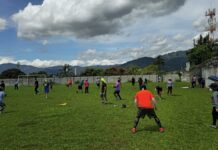
What a difference a year makes: last December the KNCB, the Dutch governing body, was in chaos, its Board mired in internal but all-too-public rancour following the sacking of another CEO, club chairmen divided over which side to support, and no obvious way out of the mess.
But thanks to a reconciliation team led by former chairman Marc Asselbergs a way forward was found, a new Board was elected in April and a new CEO appointed, and eight months of relative stability have brought the KNCB to a much more constructive atmosphere for this year’s winter general meeting, which will take place on Saturday.
The principal evidence of the new Board’s approach can be found in the bilingual Policy Plan 2023, which will be discussed at the meeting: there is clear continuity from the previous Board in terms of objectives, but there is a marked change of tone.
The keynote is set in chairman Guido Landheer’s foreword, even if it reads a little better in Dutch than in English: the discussions between the KNCB’s central organisation and the clubs, which have started this autumn and which will continue through 2023, ‘must be open conversations,’ Landheer writes, ‘in which we, as a young and ambitious board, must be allowed to express our dreams and visions, but in which we must also be realistic and not shy away from difficulties’.
And it’s not as if there is a shortage of difficulties: playing numbers remain stubbornly low, especially in women’s cricket; the KNCB remains unhealthily dependent on funding from the ICC; the fillip which the national men’s team has received from the ‘Summer of Cricket’ is unlikely to be repeated in view of the ICC’s regrettable abolition of the Super League; getting media attention for Dutch cricket within the Netherlands remains extremely difficult.
The main objectives remain as set out in the Multi-Year Plan 2021-2025, to increase the number of active participants by 40%, to continue to perform at the highest levels in international cricket, and to raise cricket’s profile in the Netherlands through better communication.
The goodwill which the new Board has been able to create depends upon the concrete steps it and its staff are able to take towards achieving these goals, and one therefore combs the 2023 plan to see what is being proposed for the immediate future.
The answer is that there are plenty of new and continuing initiatives of varying degrees of concreteness, including a growth in the number of participants – that includes those who take part in schools tournaments, clinics and other activities as well as players in KNCB competitions – from 19,000 in 2022 to 30,000 next year (an increase of 56%!), increasing the number of Regional Development Officers to five, spreading the winter training programme for juniors across four regional indoor centres, holding a national conference on Diversity, Inclusion and Equality, and producing a monthly newsletter for the clubs.
Recognising that improving both the quality and the quantity of coaching is vital, the Plan aims to extend the emerging licensing scheme for coaches so that all clubs in the top two divisions of the men’s competition have both a Level 1 and a Level 2 coach, and there is a proposal to extend the system to umpires and scorers as well.
Elsewhere in the agenda, the meeting will be informed of a recommendation of the Rules Committee, endorsed by the Board, to introduce from the 2024 season a deduction of competition points for clubs which do not abide by the requirement of the playing conditions to provide an umpire and/or scorer; this will doubtless upset some, but the Committee is on strong ground when it says that the existing sanctions have not worked.
More generally, the Plan commits to a phased implementation of the recommendations of the Competition Taskforce which has been quietly working away in the background, with more emphasis on the T20 Cup as one immediate goal and hints – which some may greet with more enthusiasm than others – of an expansion of the T10 format.
And one of the most far-reaching, if least concrete, themes of the document is the central place of women’s and girls’ cricket in both the participation and high performance areas: gaining sponsorship of the women’s team from two technology companies, HCL and now SISAR, whose three-year involvement was announced this week, is clearly a major step forward, and the Plan envisages matches against Ireland and Scotland this summer as part of the preparation for the Women’s T20 World Cup qualifier in Spain next September.
But success at the top must be sustained through growth at the grassroots, and that is something in which the clubs must ultimately have a key role, finding ways to get more girls playing cricket and developing new women’s teams, all with the support of the KNCB’s central organisation.
One concrete proposal elsewhere in the agenda which is manifestly designed to stimulate the clubs’ youth programmes, or at any rate to reward them for success, is a change to the voting system in general meetings, where the number of votes each club has is determined by the number of teams it fields in the competitions.
That has until now meant senior men’s and women’s competitions with the youth competitions excluded, but the Board now proposes to count youth teams as well, at half the value of senior teams; card votes may be a rare occurrence at KNCB general meetings, but the change is an important straw in the wind.
And then there’s money.
The projected outcome for 2022 is a surplus of €330k. compared with the €168 surplus (note the absence of a ‘k.’!) envisaged in the budget; this is largely due to an increase of €600k. in income from the ICC over the full year, although that is balanced by an additional €463k. spent on the national men’s, women’s and youth teams.
The budget for 2023 envisages a comparatively modest surplus of €52k., but KNCB treasurers tend to be conservative in their projections, and outcomes are often better than anticipated. With so much to be done, any additional resources will no doubt have plenty of claims made upon them.
The Board’s declared aim of increasing sponsorship income by €140k. is reflected in this budget, but some (unspecified) part of that will come from the newly-announced contribution from SISAR.
The meeting will take place at the VRA Club in Amstelveen, where in a largely unpublicised move the KNCB is now based, having left its premises in Nieuwegein near Utrecht; so the ‘whirligig of time’, as Shakespeare called it, has brought cricket’s headquarters back to VRA, where its office was initially housed, from 1988 until about 2005.
As CEO Monica Visser said when talking with Emerging Cricket last week, it’s preferable that the rent for the KNCB’s office is paid back into cricket rather than to an external agency.
You’re reading Emerging Cricket — brought to you by a passionate group of volunteers with a vision for cricket to be a truly global sport, and a mission to inspire passion to grow the game.
Be sure to check out our homepage for all the latest news, please subscribe for regular updates, and follow EC on Twitter, Facebook, LinkedIn and YouTube.
Don’t know where to start? Check out our features list, country profiles, and subscribe to our podcast.
Support us from US$2 a month — and get exclusive benefits, by becoming an EC Patron.






